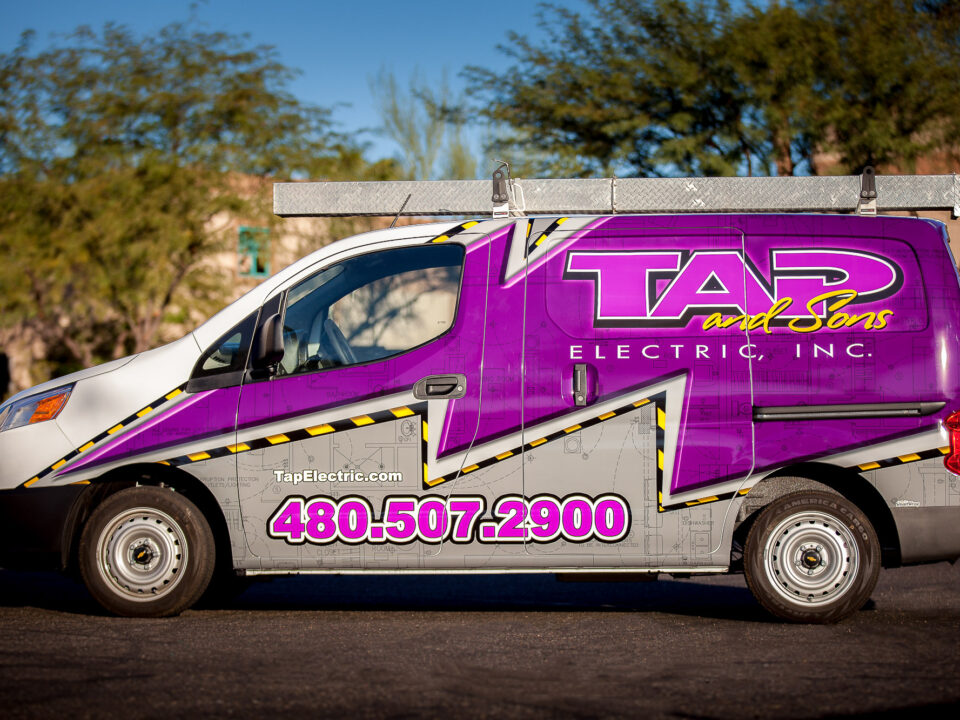
SmartWrap Vehicle Wrap Infographic
November 22, 2013
World’s smallest car at Barrett Jackson 2014
January 9, 2014What do Pizzas and Sweaters Have to do with your Business?
Hi there, thanks for reading our blog page. Here at SmartWrap we recently had a little brain storm session trying to think of things to write and post about that would be interesting and also bring a ton of value to the reader. One of the things we thought we could share is the combined 75 years of business management and entrepreneurial experience of the SmartWrap management team.
SmartWrap’s management team has a diverse background of experiences from transportation to military contract work to over 40 years of restaurant management.
If you are in the business of making things and selling them, then you need to know about Cost of Sales (COS). The cost of sales is most often a percentage. Simply put, the cost of sales is how much does it cost you as the business owner to produce the product you sell. This number does not include wages, overhead, taxes or any other expenses, only the direct costs of making the product you sell. So lets say you own a Pizza restaurant, the cost of sales for you is the cost of the dough, the sauce and the toppings. Lets say that you sell your world-famous pizzas for $10. How much of that $10 is profit? How much is the Cost of Sales? If you want to stay in business it’s absolutely imperative that you understand, measure and manage your cost of sales. Let’s say that the dough on the large pizzas cost $2, the sauce costs 50 cents, the cheese costs $1.50. Then the cost of sales for a large pizza is $4. As a percentage that’s 40%. If you charge $10 for a pizza that costs you $4 then you have $6 left over for all other expenses like wages, rent, utilities, insurance etc.
Understanding Cost of Sales is as crucial to running a business as understanding labor and fixed costs.
Lets try another example. You’re a brand of clothing. You make the world’s most comfortable wool sweaters. What items are part of your cost of sales? Sewing machines? NO. Only wool, buttons and dye. That’s it.Different industries have different standards for costs of sales. In our experience, fast food restaurants typically strive for a COS percentage of about 30-33%. Again, this means they are striving to be competitive, while at the same time not letting the costs of the food exceed about one-third of the price they sell it for. Some industries don’t have a cost of sales, as they are not in the business of manufacturing widgets. Think of a tech company or advertising agency that produces ideas and experiences. Very difficult to nail down a cost of sales. But in businesses that actually sell things – most small businesses across America, you’ll find there is a COS% whether the business owner knows what that percentage is or not, it is there.
Accurately documenting your businesses cost of sales should be done at a minimum – once a month. In fact, our experience has been to document this % on a daily and per job basis. All of this documentation and data entry takes time. But running a business blindly will cost you a lot more than time. Most business accounting software such as Quickbooks have features that allow you to track the cost of goods sold, but you can actually get a lot more detailed information within a simple excel spreadsheet. Simply build a preset file with all of your appropriate costs built into the cells, then input your formulas so that when you enter in the price you sold that widget for you can immediately see how much it cost you to produce that widget. You can see how much it cost you to produce all the widgets that day, that week, that month and that year. If suddenly you notice a day where the widgets COS% spiked, you can ask questions. You can ask why? Why did this happen? What caused this sudden jump in costs? Was it that the product was sold at the incorrect price? Was it that it took more of the raw materials than you thought it would to make the product that day? Was there waste? Theft? equipment malfunction? Knowing the answers to these questions on a per job and daily basis would be a lot better than getting the bad news from your accountant at the end of the year when it’s way too late to make adjustments.
Quick Summary: Cost of Sales is a percentage. Cost divided by sales price. Count only the costs directly associated with making the product you sell.
Please feel free to contact us with any questions or suggestions



